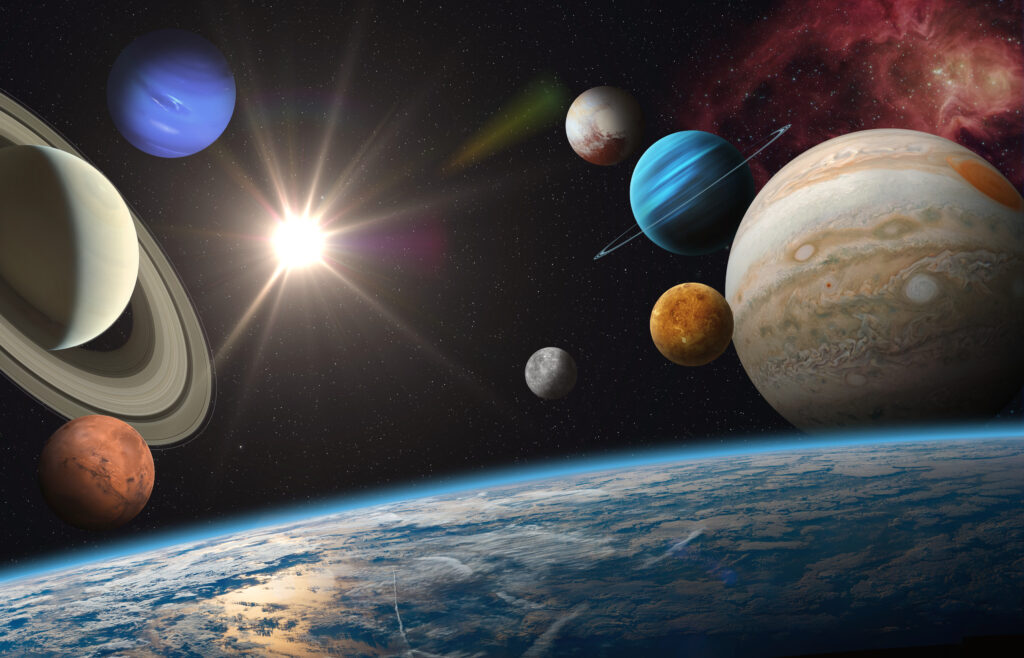Six Planets Will Align in the Night Sky This Week — and It’s a Show You Won’t Want to Miss!
Get ready for a rare and stunning celestial event: on August 28, six planets in our solar system — Mercury, Mars, Jupiter, Uranus, Neptune, and Saturn — will align in the sky, creating a spectacular planetary parade.

The best time to catch this cosmic show is early in the morning, just before sunrise. And as a bonus, if the sky is clear, the moon will also be visible, adding an extra touch of beauty to the scene.
What Is a Planetary Alignment?
A planetary alignment occurs when three or more planets appear lined up in the sky from our perspective on Earth, even if the alignment is mostly visual.
- Three planets: mini alignment
- Four: minor alignment
- Five or more: major alignment
- Eight planets or more (including Pluto): full alignment, which is extremely rare.
This time, with six planets involved, we’re looking at a major alignment.
What’s a Planetary Parade?
“Planetary parade” is not an official scientific term, but it’s often used to describe alignments with five or more planets visible in a small portion of the sky. The term adds a poetic flair, helping us imagine the planets as if they were marching together across the heavens.
And yes, this week’s event qualifies as one of those magical parades.
What Will It Look Like?
Although we call it an alignment, the planets won’t form a perfect straight line. As Time Magazine explains, it’s more of a perspective trick — like placing six people in different spots in a field and finding the perfect angle to see them all in your camera frame.
When and Where to Watch?
The best time to observe this event is about one hour before sunrise, around 5:20 a.m. (New York time) on August 28.
But don’t worry if you miss that specific day — the phenomenon will remain visible for several days afterward.
To enjoy the best view, find a spot far from city lights or head to dark sky areas. That way, you’ll have a clearer and more dazzling look at the planets.
Which Planets Can You See With the Naked Eye?
Out of the six, four planets will be visible without any equipment:
- Mercury
- Mars
- Jupiter
- Saturn
You’ll need a telescope or strong binoculars to spot Uranus and Neptune, as they’re farther and fainter.
Each planet will appear at a different time and in different colors:
- Saturn will rise first, with a yellowish glow, visible late at night.
- Neptune will follow, near the constellation Pisces.
- Then comes Uranus.
- Jupiter and Mars will appear near the waning crescent moon.
- Finally, Mercury will rise just before dawn.
How to Tell a Planet From a Star?
Here’s a helpful tip: planets don’t twinkle.
Stars flicker because of Earth’s atmosphere, but planets shine with a steady, unwavering light.
If you’re unsure what you’re looking at, try using an astronomy app like Starwalk. While your phone’s light might interfere a bit with your dark sky experience, these apps can help you pinpoint exactly what you’re seeing.
When Is the Next Planetary Alignment?
If you miss this one, don’t worry! The next planetary parade is set for January 18, 2025, when six planets — Mars, Jupiter, Uranus, Neptune, Saturn, and Venus — will appear together in the sky.
Even more impressive, on February 28, 2025, we’ll see seven planets — Saturn, Mercury, Neptune, Venus, Uranus, Jupiter, and Mars — all visible at once.
Keep your eyes on the skies — and enjoy the view! Events like these remind us of the vast beauty of the universe and the wonder waiting just above us.